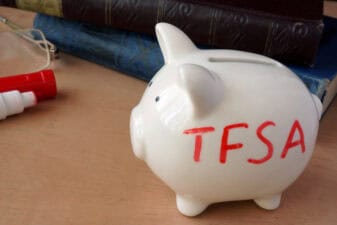Last week, the Office of Superintendent of Financial Institutions (OSFI) announced tight changes to its mortgage stress test.
Basically, starting on June 1, Canadian home buyers with a down payment of 20% or less (read: mostly millennials) must prove they can pay their mortgage if it was at a higher rate, namely, 5.25%.
For many Canadian first-time home buyers, that means one thing: good luck getting a mortgage. With home prices continuing to skyrocket, securing a mortgage with a stress test rate of 5.25% may seem daunting, if not downright impossible.
It could be a difficult mountain to climb, certainly. But, if you feel excluded from getting a traditional mortgage, here are some steps to help you get back in the race.
1. Get pre-approved ASAP
First off, the new 5.25% stress-test mortgage rate will take effect next Tuesday, June 1. Until then, the old rate, 4.79%, is still in effect. So, perhaps the most effective thing you can do is get a mortgage pre-approval now. Though it’s not guaranteed to secure you a mortgage, lenders may “grandfather” the old rate (4.79%) if you get pre-approved before June 1.
Keep in mind that the Canadian government hasn’t exactly been clear about what the new OSFI stress rate entails. We’re not sure if every home buyer, whether under contract or pre-approved, will be subject to the new rate or whether it will be only home buyers who haven’t started the process. Getting pre-approved or closing on a home doesn’t hurt your chances of grandfathering the old rate, however.
2. Pay off debt
One major component of the mortgage stress test is debt. Your bank will definitely look at your debt-to-income ratio to see how much mortgage you can actually afford.
So, to increase your likelihood of getting approved for a mortgage, seek to pay off as much debt as you can, preferably all of it. Use the debt snowball to tackle the smallest debt first, then build momentum to tackle larger debts. Or you can simply use the debt avalanche to pay off debt with the largest interest rate first and then work your way downward by rate.
If you carry high interest credit card debt, consider getting a balance transfer card with a low APR. These cards have lower introductory interest rates, which will help you put more toward your principal and less toward interest. If you come up with a pay-off strategy that allows you to pay off the credit card debt before the intro period ends, you could end up saving a ton of money on interest payments.
3. Consider a private mortgage
You may think banks are the only entities that lend out money for home buying, but that’s simply not true. Banks may have the lowest interest rates, but if their stress tests prevent you from securing a mortgage, you may have to find a private lender.
Fair warning: This is not the most economically favourable option. In fact, I’d recommend renting longer while paying down debt, saving money, and waiting for housing prices to become reasonable again before considering a private mortgage. Because they’re not coming from banks, private mortgages tend to have higher interest rates (sometimes triple or quadruple what you’d get at a traditional financial institution) and the terms can be far less favourable to you.
But if you absolutely must get a home now, a private mortgage could help you fund the purchase. Private lenders could be private institutions or a family or friend.
Don’t stop investing
You might feel tempted to raid your investments or retirement accounts in order to beef up your down payment. Whatever you do, don’t do this. Sacrificing long-term growth to secure a home purchaser now may seem like a shortcut to home ownership. But the consequence of sacrificing long-term growth can derail your retirement planning.
If you’re unable to qualify for a mortgage because of new restrictions, I’d say just wait it out. Practice some delayed gratification and wait for the market to stabilize again.
Want a chance to beef up your down payment? Invest in these …









